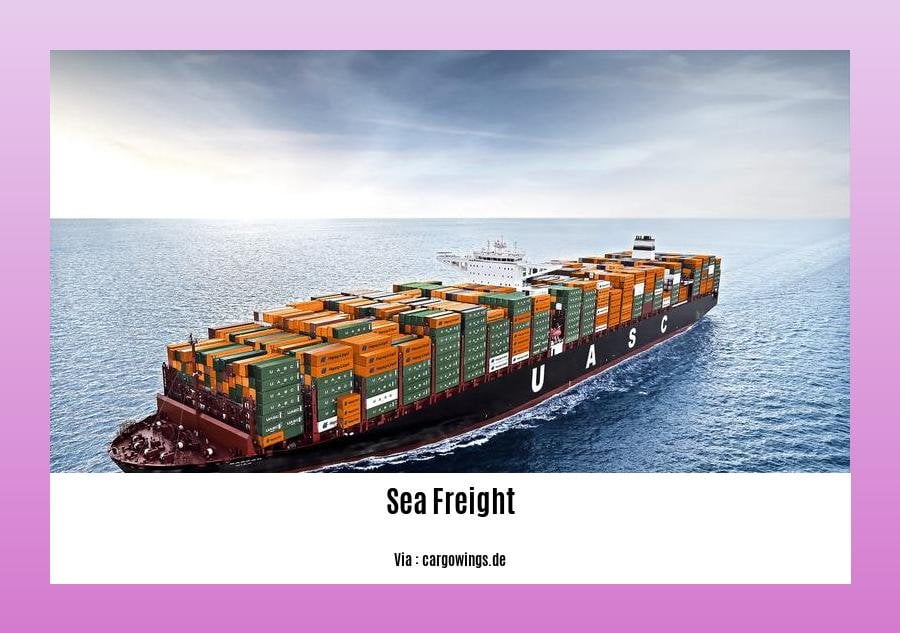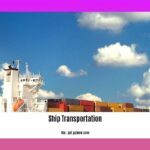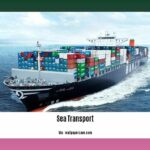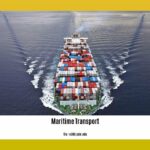When it comes to supply chain management, optimizing costs and efficiency is crucial. However, every mode of transportation has its disadvantages, and sea freight is no exception. In this article, we will delve into the world of sea freight to analyze its drawbacks and explore strategies for mitigating the associated challenges. From increased transit times to potential disruptions, understanding the disadvantages of sea freight is essential for supply chain professionals seeking to streamline their operations and improve overall efficiency.
Key Takeaways:
- Sea freight faces challenges such as high costs, limited ship capacity, port personnel shortage, and a shortage of containers.
- Compared to other methods like air freight, sea freight is slower.
- Sea freight is prone to cargo loss, disruption, and delays, making it risky.
- Lack of infrastructure and global reach in certain locations poses challenges for sea freight.
- Environmental regulations and political changes affect shipping routes, adding further challenges.
- Missing or incorrect documentation and customs clearance regulations can cause problems in sea freight logistics.
Disadvantages of Sea Freight
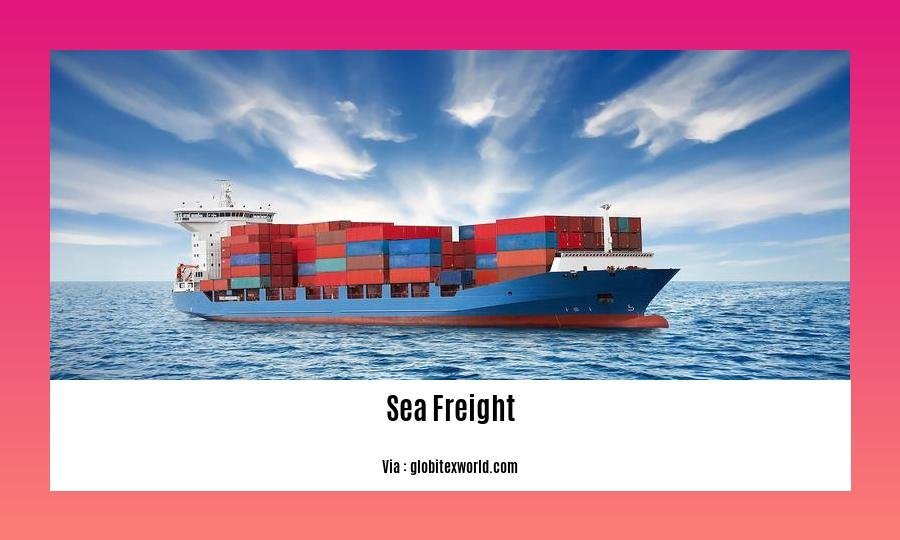
Sea freight, although widely used in supply chain management, comes with its fair share of disadvantages. It’s important to understand these drawbacks in order to optimize costs and efficiency in logistics operations. In this article, we will explore the various disadvantages associated with sea freight and discuss potential solutions to mitigate these challenges.
High Costs and Limited Ship Capacity
Sea freight often involves significant costs, especially when compared to other methods like air freight. The expenses associated with container rentals, port handling fees, and customs duties can quickly add up. Furthermore, the limited ship capacity can lead to delays and increase the overall cost of transportation. It is essential for logistics professionals to carefully analyze the cost implications and explore alternative options to optimize their supply chains.
Slower Transit Times
Compared to air freight, which offers rapid transportation, sea freight is relatively slower. It typically takes longer for cargo to reach its destination via sea routes. This slower transit time may not be suitable for time-sensitive shipments or industries where quick delivery is crucial. Logistics planners must take this into account when deciding on the mode of transportation for their goods.
Cargo Loss, Disruption, and Delays
Sea freight is inherently prone to cargo loss, disruption, and delays. Factors such as extreme weather conditions, port congestion, and operational inefficiencies can lead to significant setbacks in the delivery timeline. These risks highlight the need for robust risk management strategies, including proper insurance coverage and contingency plans to minimize the impact of unforeseen events.
Lack of Infrastructure and Global Reach
In certain locations, sea freight faces limitations due to the lack of adequate infrastructure and global reach. Remote areas or landlocked countries may have limited access to ports, making sea freight an impractical option. This lack of infrastructure can result in longer lead times and higher transportation costs. Alternative transportation modes, such as rail or air, may need to be explored to overcome these challenges.
Environmental Regulations and Political Changes
Environmental regulations and political changes can significantly impact shipping routes and operations. Changes in regulations may require vessels to take longer detours or adopt eco-friendly practices, which can increase costs and transit times. Additionally, geopolitical conflicts or trade disputes may result in disruptions or changes in shipping routes, further complicating sea freight operations. It is crucial for logistics professionals to stay updated on regulatory and political developments to ensure smooth operations.
Documentation and Customs Clearance Challenges
Missing or incorrect documentation and customs clearance regulations can pose significant challenges in sea freight logistics. These issues can lead to cargo delays, fines, and even the seizure of goods. To avoid such setbacks, accurate and complete documentation, as well as a thorough understanding of customs regulations, are essential. Engaging experienced customs brokers and freight forwarders can help navigate these complex processes.
In conclusion, while sea freight is a commonly used mode of transportation in supply chain management, it is not without its disadvantages. From high costs and limited ship capacity to slower transit times and potential cargo loss, there are various challenges to consider. However, by carefully analyzing these disadvantages and implementing appropriate risk management strategies, logistics professionals can optimize costs and efficiency in their supply chains.
The roadways in India may provide convenience, but they also have their drawbacks. Explore the Disadvantages of roadways in India. Click here to learn more.
Sea transport is a widely used mode of transportation, but it does come with certain disadvantages. Discover the Disadvantages of sea transport. Click here to find out more.
Ship transportation may seem efficient, but it has its fair share of disadvantages. Uncover the Disadvantages of ship transportation. Click here to dive deeper into the topic.
3. Dependence on Complex and Time-Consuming Customs Processes
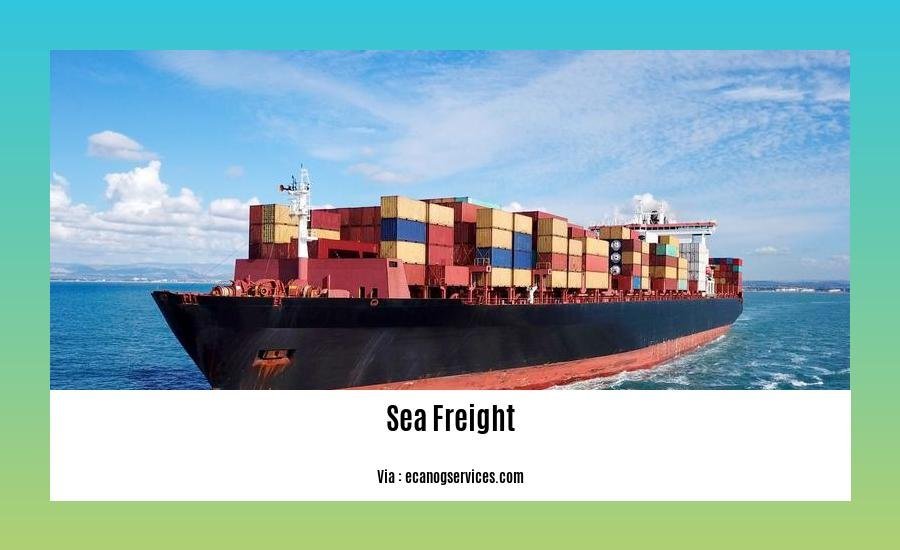
As an experienced logistics professional, I understand the challenges that come with international trade and transport, particularly when it comes to customs processes. The dependence on complex and time-consuming customs processes is a disadvantage that those involved in sea freight must be aware of. In this section, we will explore the difficulties and risks associated with customs enforcement and compliance, as well as the complications posed by customs requirements.
Customs Enforcement and Compliance Challenges
International trade and transport involve cooperation between countries, which means that customs enforcement and compliance programs are essential. However, these programs can present challenges and risks. Effective customs enforcement is necessary to prevent illegal activities, such as smuggling and money laundering. Compliance with customs regulations ensures that goods are correctly declared, classified, and taxed.
To address challenges in the maritime environment, customs administrations with marine borders establish marine patrol operations. These operations aim to enhance surveillance and enforce customs regulations effectively. The collaboration between customs agencies and other law enforcement entities is vital to maintain security and facilitate smooth trade flows.
Complexity of Customs Requirements
Complying with customs requirements can be a daunting task due to their complexity. A significant amount of information needs to be declared, products must be classified, paperwork must be handled, and licenses must be obtained. This complexity poses challenges for the logistics industry, as it requires careful attention to detail and expertise in navigating the intricacies of customs procedures.
Fortunately, customs agents play a crucial role in assisting shippers and buyers in navigating the complexities of customs requirements. Their expertise and knowledge of customs regulations and procedures help ensure the smooth movement of goods across borders. By working closely with customs agents, companies can mitigate the risks and complexities associated with customs processes.
Simplification and Harmonization of Customs Requirements
While customs requirements may appear daunting, efforts are being made to simplify and harmonize them. Trade agreements provide opportunities to streamline customs procedures and reduce complexity and confusion. Simplification and harmonization can help alleviate the burden placed on companies involved in international trade.
However, not all trade agreements lead to simplicity. Bilateral trade agreements, for example, may introduce additional complexity and confusion due to unique customs requirements imposed by each participating country. It is essential for businesses to carefully evaluate the customs implications of any trade agreement they enter into to minimize potential disruptions and delays.
Dependence on Complex and Time-Consuming Customs Processes
When it comes to sea freight in international trade, one of the disadvantages is the dependence on complex and time-consuming customs processes. Customs clearance procedures can often be lengthy, leading to shipping delays. Inaccurate or incomplete documentation is a common cause of these delays, which can result in additional costs and fines.
The intricacies of customs requirements and the need for compliance add layers of complexity to the sea freight process. Transportation companies and shippers must allocate sufficient time and resources to navigate the customs procedures effectively. It is crucial to ensure that all necessary documentation is accurate, complete, and submitted on time to avoid unnecessary delays and complications.
In conclusion, the dependence on complex and time-consuming customs processes is a significant drawback of sea freight in international trade. To overcome these challenges, logistics professionals must understand the intricacies of customs requirements and engage experienced customs agents to assist with compliance. By staying informed and proactive in managing customs processes, companies can minimize delays, optimize costs, and ensure the smooth flow of goods across borders.
Key Takeaways:
- Customs enforcement and compliance programs are essential for international trade and transport, presenting challenges and risks.
- Customs requirements are complex, requiring a significant amount of information, classification of products, paperwork, and licenses.
- Customs agents play a crucial role in assisting with navigating customs requirements.
- Simplification and harmonization of customs requirements under trade agreements can alleviate complexity, but bilateral agreements may introduce additional complications.
- Dependence on complex and time-consuming customs processes is a disadvantage of sea freight, with customs clearance procedures often causing delays.
- Accuracy, completeness, and timely submission of documentation are crucial for avoiding delays and fines in customs processes.
Sources:
- IMF eLibrary
- Be Informed platform
4. Limited Flexibility in Scheduling and Changes
In the world of logistics and supply chain management, it is crucial to have a flexible approach to scheduling and adapt easily to changes. However, when it comes to sea freight, limited flexibility in scheduling and changes becomes a significant disadvantage. Let’s explore this aspect of sea freight in more detail.
The Challenges of Limited Flexibility in Scheduling and Changes
Sea freight operations involve working with various stakeholders, including international suppliers, freight forwarders, and customs brokers. Each party has its own schedules and processes, making it challenging to coordinate and make last-minute adjustments. Here are some key challenges associated with the limited flexibility in scheduling and changes in sea freight:
Rigid Shipping Schedules: Sea freight often operates on fixed sailing schedules, which can be infrequent and time-consuming. Unlike air freight, where there are multiple flights daily, sea vessels have specific departure and arrival dates. This rigid scheduling can limit the ability to accommodate sudden changes or urgent shipments.
Long Lead Times: Sea freight is known for its longer transit times compared to air freight. The slower nature of sea transport means that any changes or disruptions in the supply chain can have a more significant impact on delivery timelines. Limited flexibility in scheduling and changes can result in delays and increase the risk of missed deadlines.
Complex Documentation Processes: Sea freight involves extensive documentation requirements, including customs paperwork, bills of lading, and cargo manifests. The process of managing and processing these documents can be time-consuming and prone to errors. Changes in shipping details or scheduling require updates to these documents, which can further delay the shipment.
Port Congestion and Delays: Ports are key nodes in the sea freight network, and congestion or delays at ports can disrupt the entire supply chain. Limited flexibility in scheduling and changes can exacerbate these issues, as vessels may need to wait for their specified timeslot for loading and unloading. This can result in a domino effect of delays and increased costs.
While sea freight offers cost advantages and the ability to transport large volumes of cargo, it is important to consider the limitations in terms of flexibility in scheduling and changes. So, how can companies mitigate these challenges and optimize their sea freight operations?
Key Takeaways:
- Limited flexibility in scheduling and changes is a significant disadvantage of sea freight in supply chain management.
- Rigid shipping schedules and long lead times can make it difficult to accommodate sudden changes or urgent shipments.
- Complex documentation processes and the need for updates can further delay the shipment.
- Port congestion and delays can disrupt the entire supply chain.
- Mitigating these challenges requires efficient coordination with stakeholders and proactive risk management strategies.
Sources:
– The Balance: Pros and Cons of a Flexible Work Schedule
– HubSpot Blog: Flexible Schedules: The Pros, Cons, & Surprising Outcomes
5. Environmental Impact and Sustainability Concerns
As we delve deeper into the disadvantages of sea freight, environmental impact and sustainability concerns undoubtedly take center stage. The maritime sector, while making significant strides in mitigating its environmental effects, still faces considerable challenges when it comes to achieving sustainability (EU maritime transport). Let’s explore the key points that highlight the environmental drawbacks associated with sea freight.
The Environmental Impacts of Sea Freight: A Closer Look
Sea freight, as an essential mode of transportation, has a substantial impact on the environment (OECD). Here are the notable aspects to consider:
- Emissions and Pollution: Greenhouse gas emissions and air pollution from shipping contribute significantly to climate change and local environmental degradation. These emissions include carbon dioxide, sulfur oxides, nitrogen oxides, and particulate matter. The impact on air quality and marine ecosystems can be profound.
- Accidental Pollution: Although the industry has made improvements, accidental oil spills and other forms of pollution remain persistent risks. These incidents can devastate coastal areas and harm marine life.
- Noise Pollution: Maritime transportation produces considerable noise pollution, affecting marine animals and ecosystems that rely on sound for communication, navigation, and feeding.
- Ballast Water Discharge: Ships often discharge ballast water, potentially introducing invasive species into new environments and causing ecological imbalances.
- Habitat Destruction: Activities such as dredging ports and constructing infrastructure for sea freight can lead to habitat destruction, impacting delicate coastal ecosystems.
Addressing the Challenges for a Sustainable Future
While the environmental impacts of sea freight are concerning, the industry is actively working towards incorporating sustainable practices. Here are some key efforts:
- Regulations and Policies: Governments and international organizations are implementing regulations and policies to reduce emissions, improve fuel efficiency, and encourage the adoption of cleaner technologies.
- Alternative Fuels and Technologies: The exploration of alternative fuels like liquefied natural gas (LNG) and the use of eco-friendly technologies such as scrubbers and wind-assisted propulsion systems are promising steps toward sustainability.
- Green Ports and Shipping: Developing eco-friendly port infrastructure and implementing efficient waste management systems contribute to reducing the environmental impact of sea freight.
- Collaboration and Research: Stakeholders from the shipping industry, academia, and research institutions are collaborating to develop innovative solutions that increase efficiency and decrease the environmental footprint of sea freight.
Key Takeaways:
- Sea freight has significant environmental impacts, including emissions, pollution, noise, ballast water discharge, and habitat destruction.
- Accidental pollution, such as oil spills, poses risks to coastal areas and marine life.
- The maritime industry is actively addressing these challenges through regulations, policies, alternative fuels, green technologies, and collaborative research.
- Achieving sustainability in sea freight requires a collective effort from governments, organizations, and industry stakeholders.
Sources:
– OECD: Read more
– EU maritime transport: Read more
FAQ
Q1: What are some of the challenges faced by sea freight in supply chain management?
A1: Sea freight faces challenges such as high costs, limited ship capacity, shortage of containers, cargo loss, disruption, and delays.
Q2: How does sea freight compare to other modes of transportation in terms of speed?
A2: Sea freight is slower compared to other methods like air freight.
Q3: What are some risks associated with relying on sea freight as a mode of transportation?
A3: Sea freight is prone to cargo loss, disruption, and delays, making it risky for supply chain management.
Q4: What challenges does sea freight face when it comes to infrastructure and global reach?
A4: Sea freight faces challenges in locations with a lack of infrastructure and limited global reach, affecting its efficiency in supply chain management.
Q5: How do customs clearance regulations and documentation impact sea freight logistics?
A5: Inaccurate or incomplete documentation, as well as complex and time-consuming customs processes, can cause problems and delays in sea freight logistics.
- Mastering Leader in Spanish: The Complete Guide - April 19, 2025
- Uncovering Surprising Parallels: England Size Compared to US States - April 19, 2025
- Old Mexico Map: Border Shifts 1821-1857 - April 19, 2025
